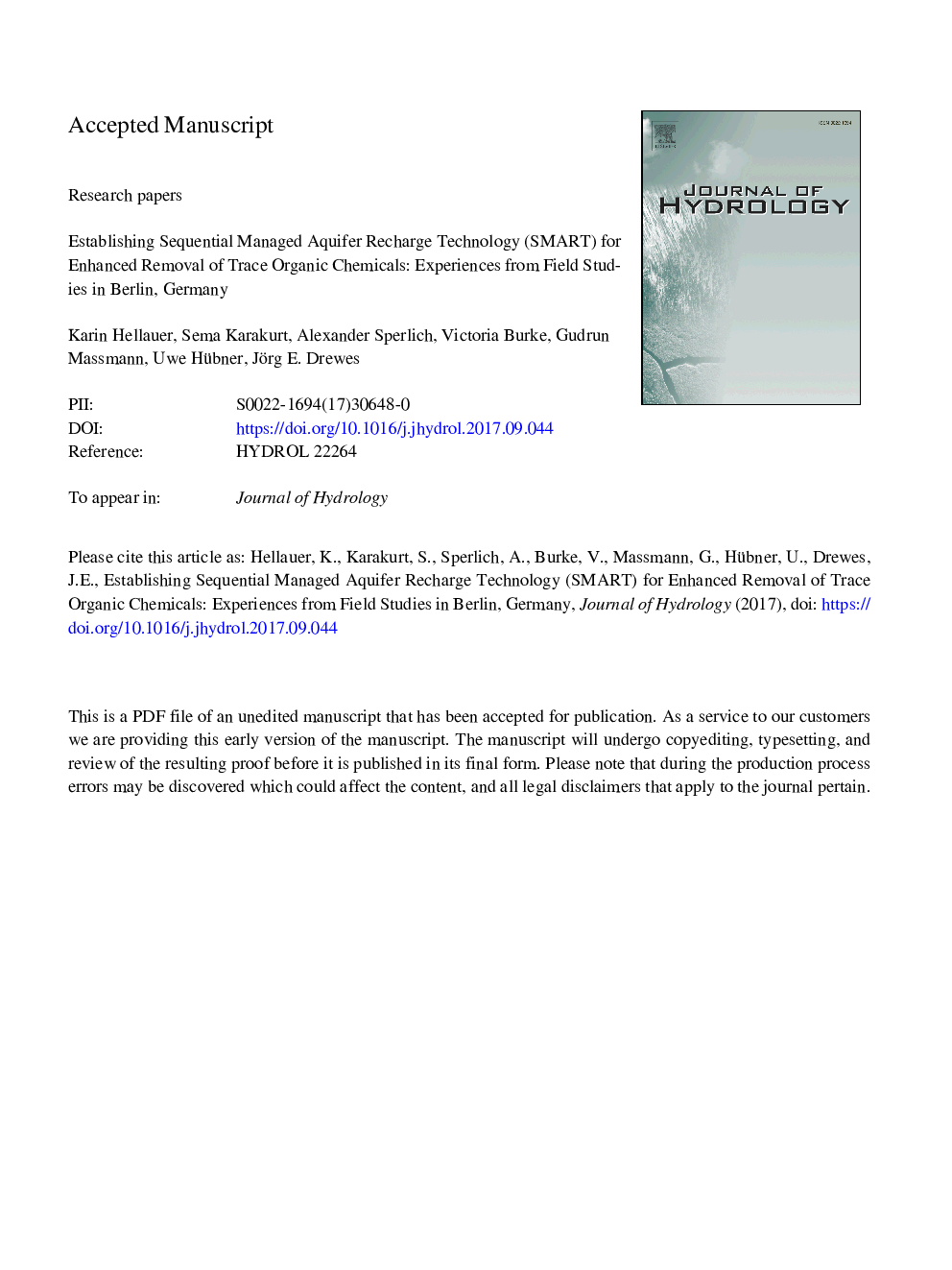| کد مقاله | کد نشریه | سال انتشار | مقاله انگلیسی | نسخه تمام متن |
|---|---|---|---|---|
| 8894637 | 1629891 | 2018 | 31 صفحه PDF | دانلود رایگان |
عنوان انگلیسی مقاله ISI
Establishing sequential managed aquifer recharge technology (SMART) for enhanced removal of trace organic chemicals: Experiences from field studies in Berlin, Germany
دانلود مقاله + سفارش ترجمه
دانلود مقاله ISI انگلیسی
رایگان برای ایرانیان
کلمات کلیدی
موضوعات مرتبط
مهندسی و علوم پایه
علوم زمین و سیارات
فرآیندهای سطح زمین
پیش نمایش صفحه اول مقاله

چکیده انگلیسی
Despite the efficient removal of many contaminants including pathogens and trace organic chemicals (TOrCs) during managed aquifer recharge (MAR), fate and transport of TOrCs in the subsurface might not always occur under conditions that favor effective biotransformation resulting in a contamination risk where water is recovered for drinking water production. A promising technology that can lead to improved removal of TOrCs is the sequential MAR technology (SMART), which combines two infiltration steps with an intermediate aeration to establish more favorable oxic and carbon-limited conditions resulting in enhanced TOrCs transformation. The aim of this study was to test the performance of the SMART concept under field conditions in comparison to a conventional MAR using pond infiltration (cMAR) operated in Berlin, Germany. Although oxic conditions were obtained at both field sites considering infiltration depth to 200â¯cm, redox conditions were more stable at the SMART facility fed with bank filtrate. In addition, carbon-limited conditions were solely observed during SMART. Chemicals known to persist during MAR, including candesartan, carbamazepine, dihydroxydihydrocarbamazepine, olmesartan, oxypurinol, phenylethylmalonamide, primidone, and tolyltriazole exhibited a refractory behavior at both field sites, whereas valsartan acid, metformin, and gabapentin-lactam were removed by more than 85% during 200â¯cm of infiltration. 4-Formylaminoantipyrine, acesulfame, benzotriazole, and gabapentin exhibited a significantly enhanced transformation during SMART compared to the cMAR site. These results confirm that SMART can result in controlled oxic and carbon-depleted subsurface conditions during MAR facilitating an improved transformation of moderately degradable TOrCs by natural treatment processes.
ناشر
Database: Elsevier - ScienceDirect (ساینس دایرکت)
Journal: Journal of Hydrology - Volume 563, August 2018, Pages 1161-1168
Journal: Journal of Hydrology - Volume 563, August 2018, Pages 1161-1168
نویسندگان
Karin Hellauer, Sema Karakurt, Alexander Sperlich, Victoria Burke, Gudrun Massmann, Uwe Hübner, Jörg E. Drewes,